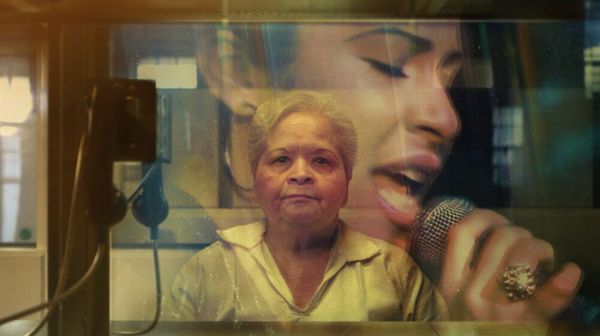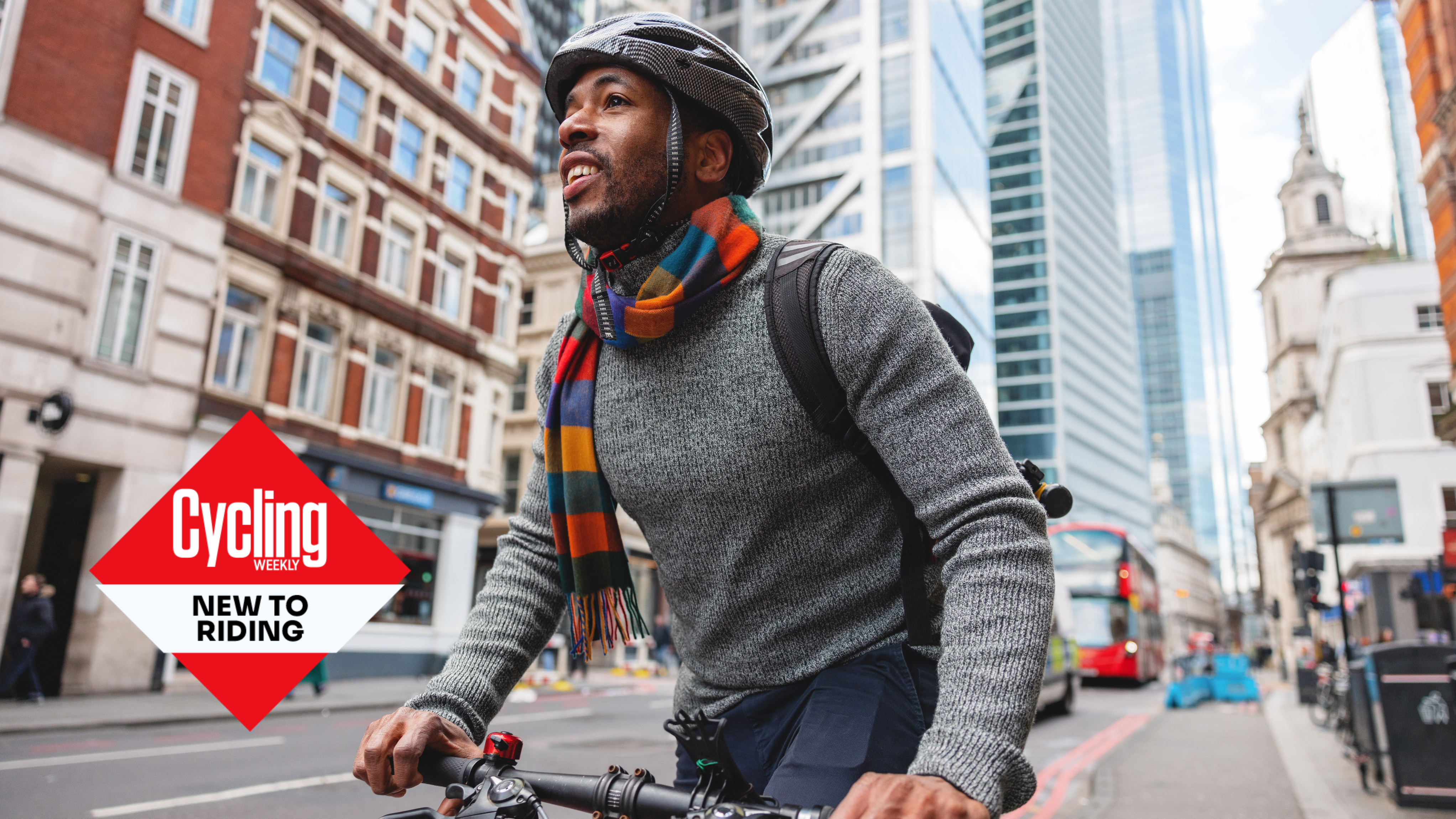
This article has been freshly updated as part of our 'New to Riding' week, running from March 10 to March 17, with a special focus on tips, tricks and inspiration for new riders.
The first thing to remember is that cycling is not a dangerous activity. Statistics from the Department of Transportation show that, per billion miles travelled, more pedestrians are killed than cyclists — and we wouldn't consider walking a dangerous activity.
There’s no question, cycling is good for your health — both physical and mental — and for the environment. It’s a great form of exercise to incorporate into your day; it lowers your risk of cancer, stroke, type 2 diabetes and cardiovascular disease among other life-threatening conditions. It also helps prevent obesity and will keep you fit in general. Additionally, as you age cycling will help you retain muscle mass, keep body fat low and your immune system strong.
Your mind will reap the benefits too. Cycling can ease anxiety and depression and will boost general mental well-being. This is not just about doing a hard workout, however, but also about getting some fresh air.
Cycling is also one of the most eco-conscious modes of transport, and with climate change being something we should all care about, getting more people on bikes should be a priority, helping to reduce emissions.
Yet, despite all this, all over the world there are still many barriers to hopping on a bike, be that for commuting or leisure: road safety (and associated lack of infrastructure), bike theft, poor weather, and general hassle (think storage and other facilities at a place of work), to name a few.
Fear of road traffic sits high on the list of deterrents when it comes to cycling but, as per the statistic above, the objective risk is quite low. Key to getting more people on bikes is ensuring they know how to stay safe and, consequently, feel confident while riding.
We've all been there. Speak to almost any seasoned cyclist and they'll likely remember the first time they went cycling on a busy road, and how daunting it was. You've got cars and bigger vehicles whizzing past, often closer than they should, while you're trying to navigate junctions and make sure you position yourself properly and indicate correctly so as not to annoy anyone. All while secretly wishing you could get back on the pavement. Once you overcome this fear though, cycling on the roads will become less scary, enjoyable even.
Let's take a look at how you can make cycling even safer. This list is not exhaustive, and for more information you can check out Cycling UK, the Highway Code and, if you're in the States, NHTSA, among others.
How do you stay safe while cycling?
Road positioning
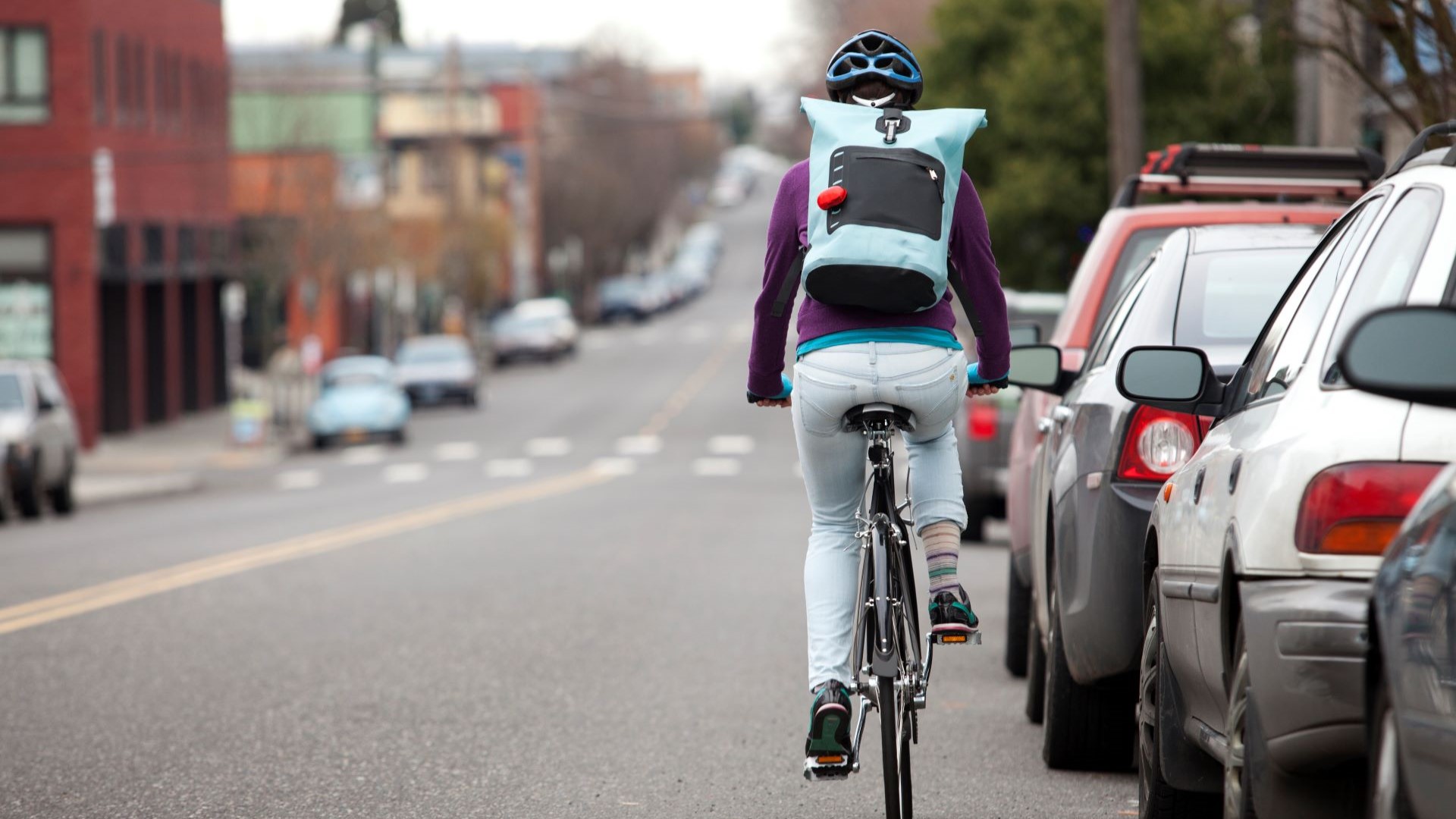
You shouldn’t ride too close to the kerb, as riding in the gutter puts you at risk from slippery manhole covers and road debris, the latter of which can puncture your tyres. It also leaves you with nowhere to go if a pothole suddenly appears in your path or a car comes too close.
Remember, you are not in the way of the traffic, but part of it, so position yourself as such and be assertive. Think about where the cars are. You can either take the centre of the lane (primary position) or go slightly to the inside of the flow of traffic (secondary position). You'll be more visible to other road users in one of these positions than if you're hugging the curb. Primary position is normally taken if it would be dangerous for a driver to overtake you at that moment. For example, if you’re coming up to a traffic island there wouldn't be space for a driver to safely overtake, so you should take primary position to indicate this.
Hazard perception
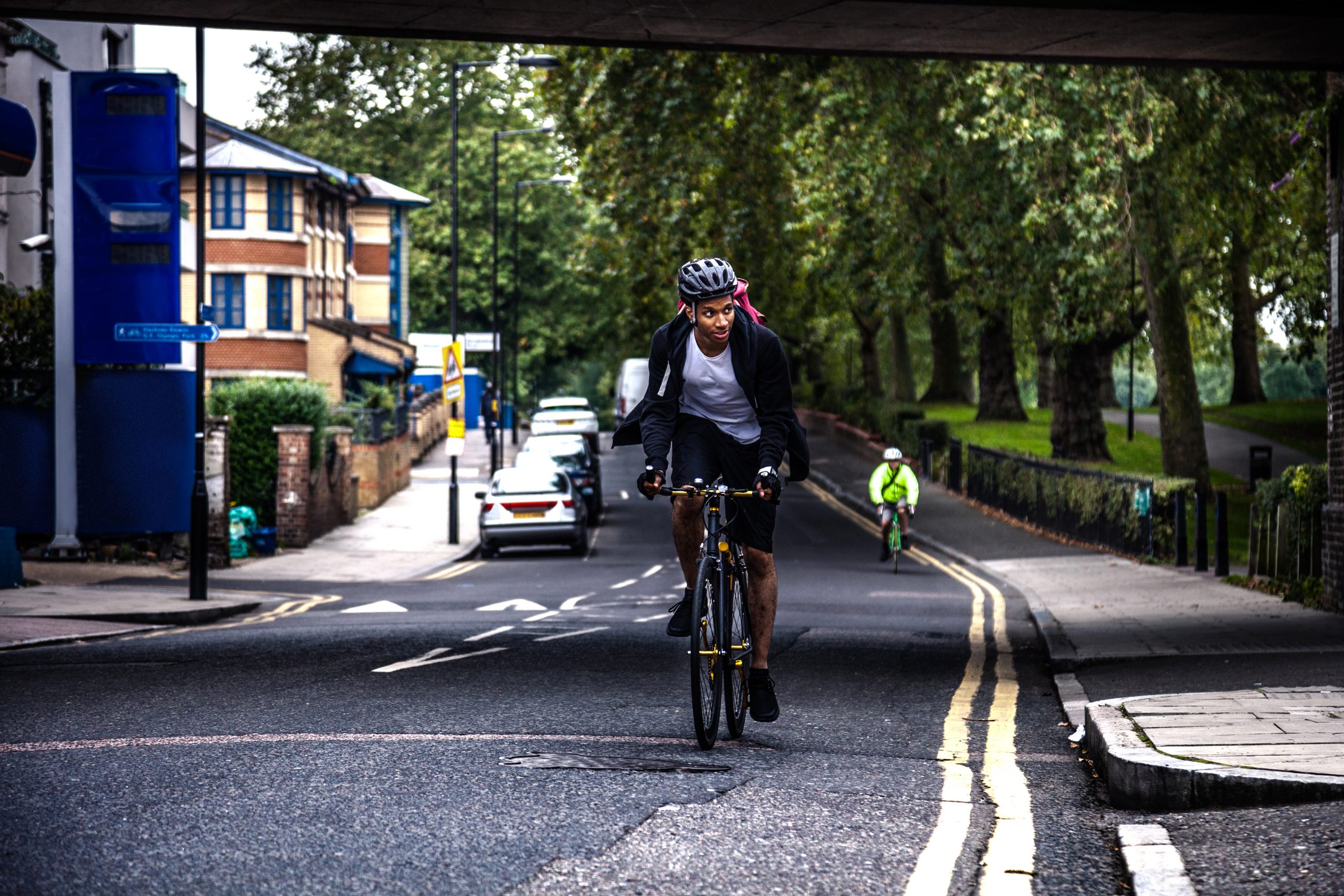
For anyone using the roads, it is important to be on the lookout for potential hazards. Identifying these early on gives you time to safely respond to them. Many of these are the same as when driving, such as keeping an eye out for cars pulling out of driveways and when approaching junctions. Others are much more hazardous for cyclists, like potholes, fallen branches, slippery manhole covers and puddles.
If you are cycling in a group, it is helpful to call out — or point to — any hazards you notice. Many eyes are better than just one set, and it will mean any manoeuvres to avoid the hazard can be taken safely by everyone.
Another hazard particularly relevant to cyclists is people opening their car doors into the road. When cycling past parked cars, it is safer to move out a little further into the road so you are out of the range of any doors, should they be suddenly opened.
Junctions
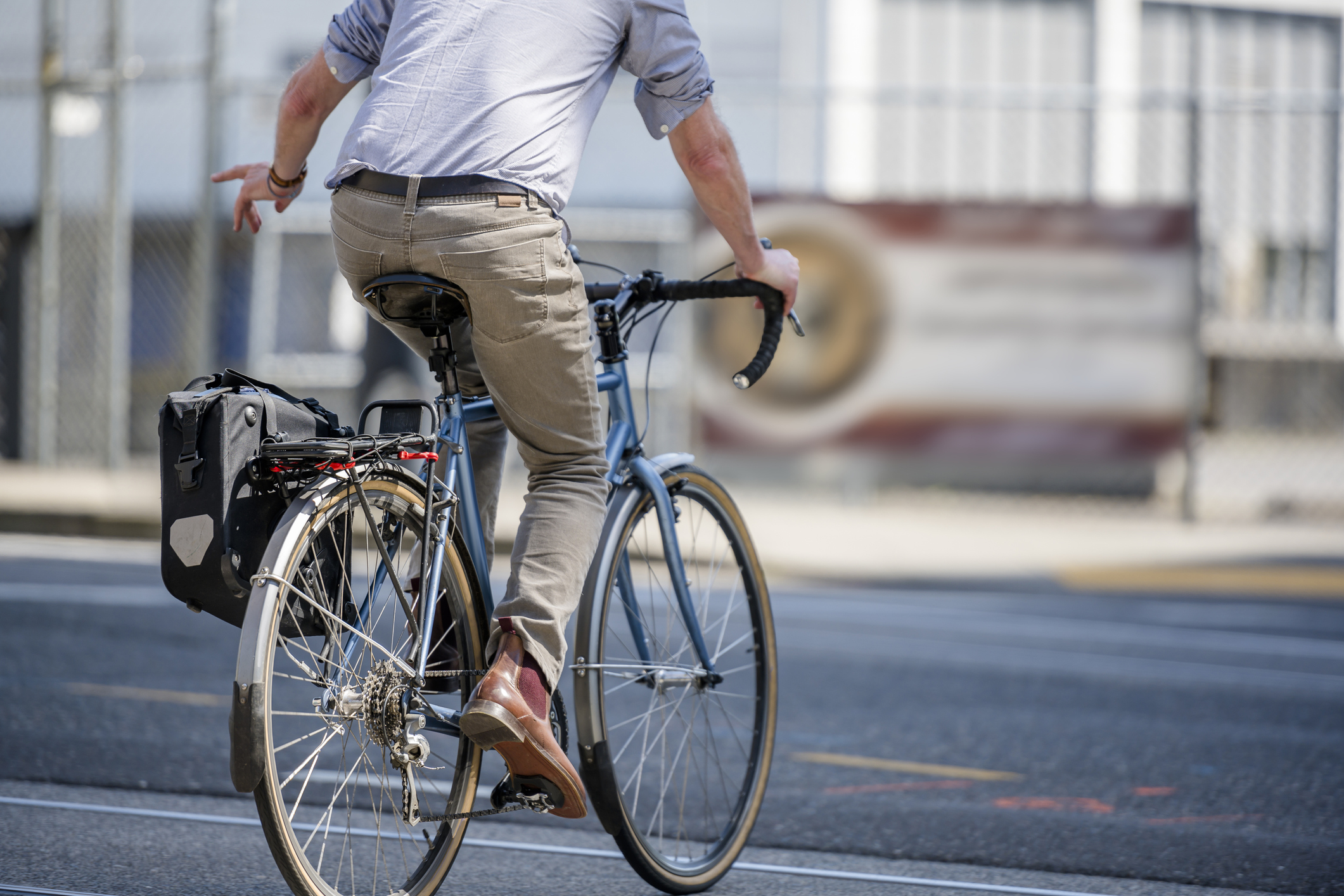
It’s important to make your intentions clear when you want to turn at a junction. First, look behind you to check for any hazards, then signal the direction you wish to turn with one hand. If you’re not confident with either looking behind you while cycling or taking a hand off the handlebars, you can practise these on a traffic-free cycle path.
When turning across a lane of traffic, make sure not to move so far over that motorists will be tempted to undertake you. Moving over to where the outside (driver's side) tyres of a car would be is an appropriate amount. Then, complete the turn when it is safe to do so.
Making eye contact
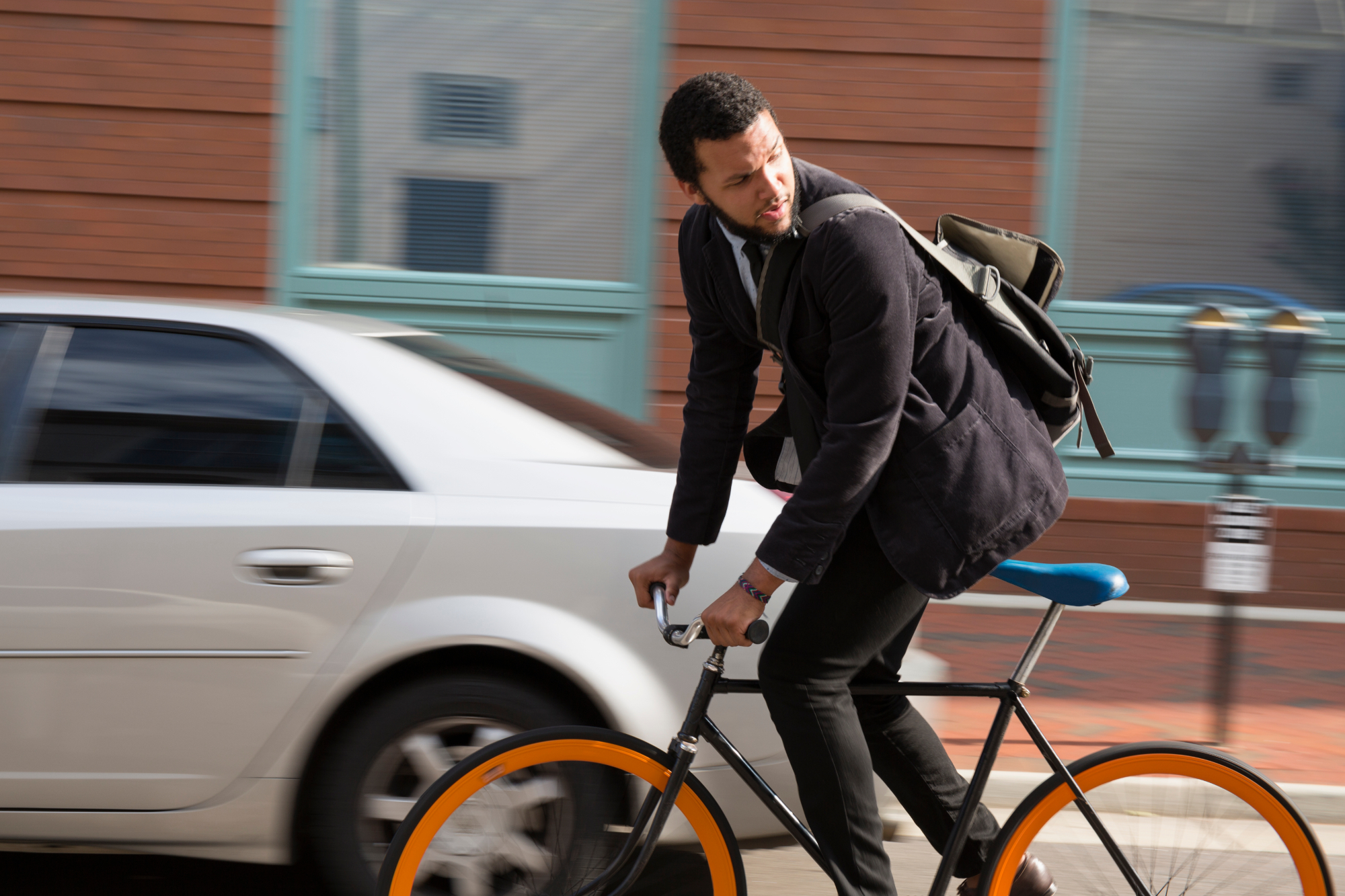
This is a good way of ensuring you have been seen by other road users, whether it is motorists at a junction or pedestrians on the pavement. If you don't get a reaction from the person, it is best to proceed under the assumption that they haven’t seen you and be ready to steer or brake as necessary.
Filtering through traffic
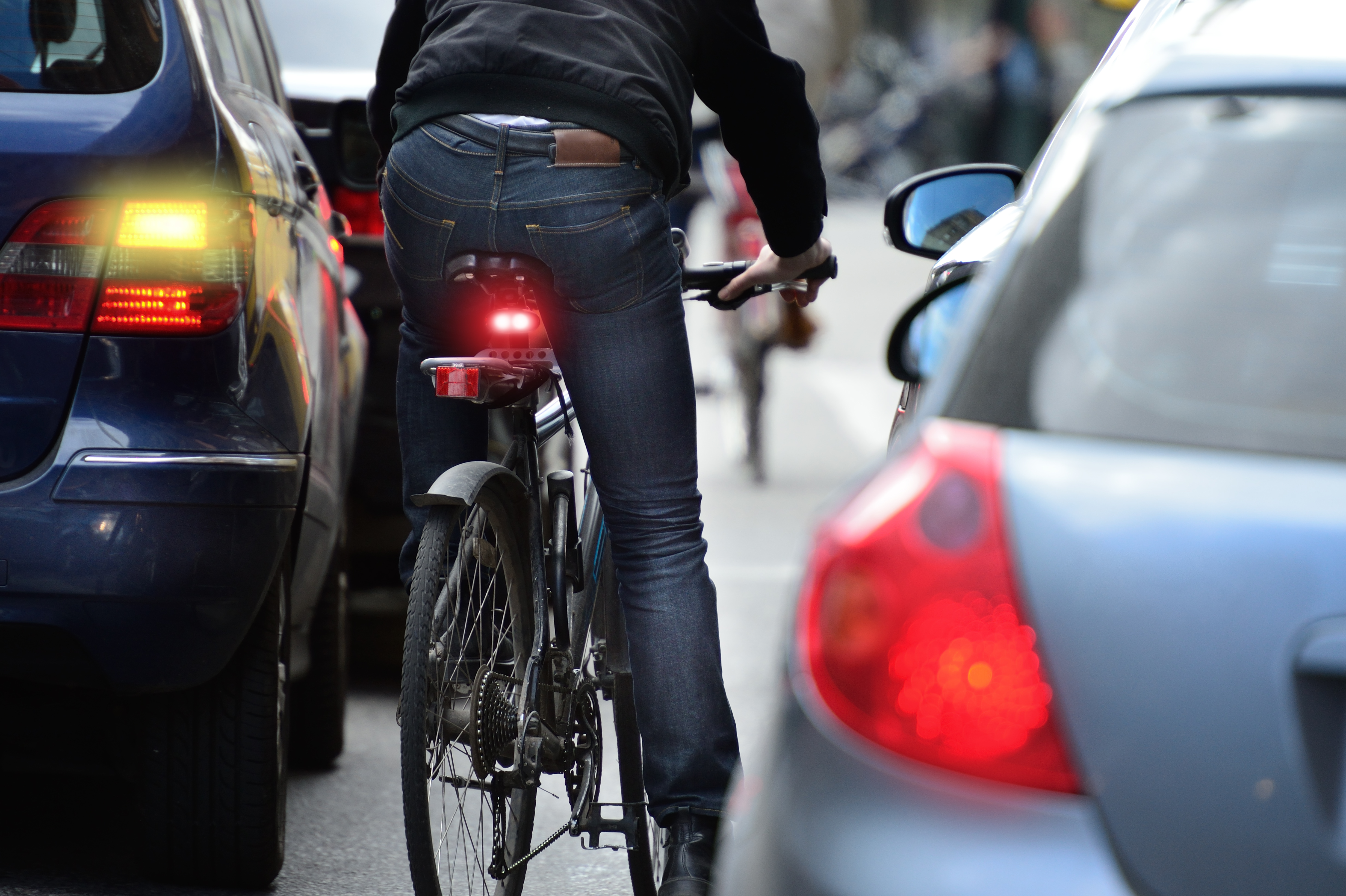
Filtering is when you move past slow or stationary traffic. This is perfectly legal in the UK and it enables cyclists and motorcyclists to keep moving when other vehicle cannot, improving traffic flow. Contrary to what some people believe, in the UK it is legal to pass vehicles on both the right and left-hand sides. In other, countries, you should check local laws; in the US, the law on filtering is different between states.
Passing on the inside is always riskier because you will be in the driver’s blind spot and if they move over a little — or make a turn — you could be hit. Longer vehicles such as lorries or buses should not be passed on the left unless they are completely stationary and will remain so until after you have passed.
Cycling safety essentials
Pre-ride checks
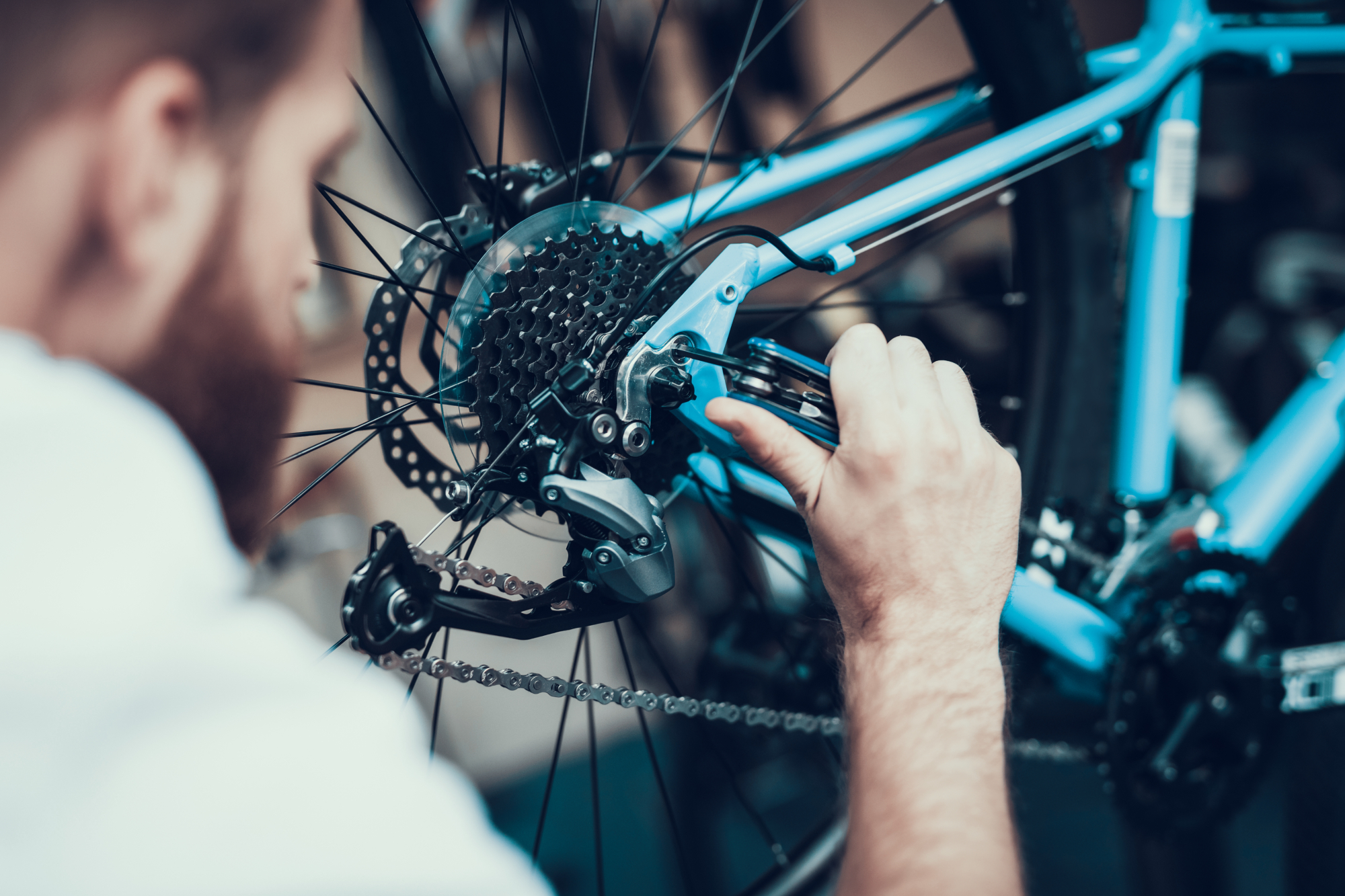
It's always worth giving your bike a once over before you set off for your ride. The most important part to check is that the brakes are working properly and will bring you to a stop.
Making sure that the tyres are properly inflated and that any loose bolts are tightened up needn’t add much time to the start of your ride, but it will make you safer and less likely to run into any mechanical problems.
Helmets

There is no law that compels you to wear a helmet while cycling in the UK. Some states in the US require cyclists to wear helmets, some only require children to. Other countries, including New Zealand and Australia, have mandatory helmet laws.
Mandatory helmet laws are associated with falls in the number of people cycling — which can be detrimental to cycling safety due to the ‘safety in numbers’ effect. A quick glance across the North Sea to the Netherlands shows how safe and ordinary it is to cycle without a helmet.
However, when mountain biking or road cycling, it is advisable to wear a helmet, and most organised club rides and cycling events will require that you do so.
Lighting
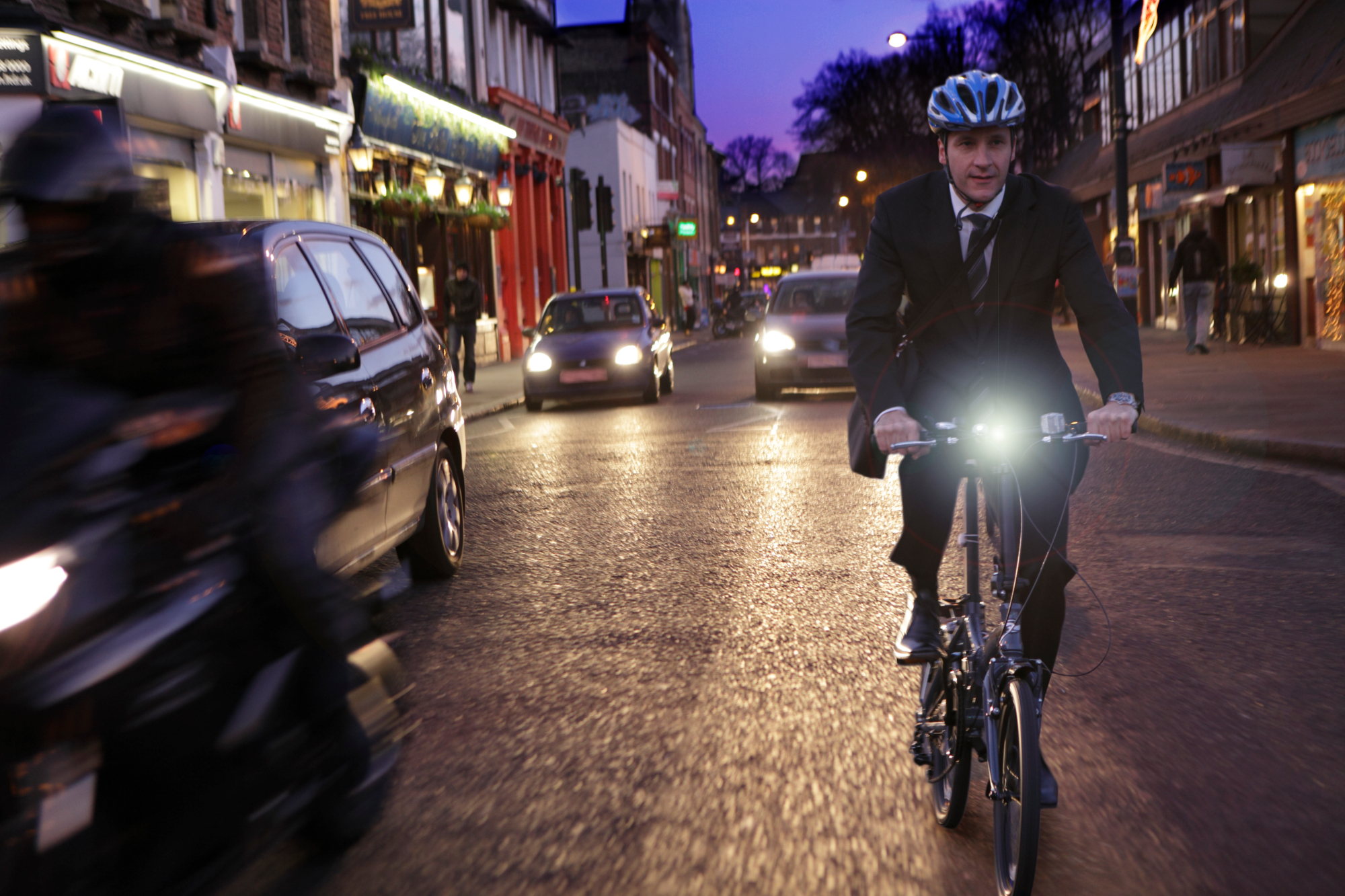
Between sunset and sunrise you are required by law to have a white light on the front and a red light on the rear. This rule applies in both the UK and the USA, but be sure to check locally. Daytime running lights can help to increase your visibility to other road users, although these are by no means a requirement.
When cycling at night, it is a very good idea to have a spare set of lights in case the first set fails. This doesn’t have to be as fancy as your first set - lights can be quite expensive - but any kind of back-up would be a lot better than nothing.
Clothing
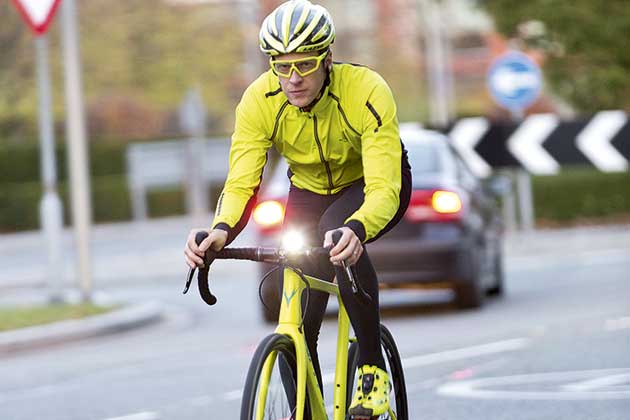
As with daytime lights, there is no obligation to wear reflective or hi-viz clothing. Evidence over hi-viz clothing is conflicting, with some studies showing it makes you safer, some showing it makes no difference. Also, it's worth noting that being seen and being safe are (subtly) different things.
It's entirely up to you what you choose to wear, but some people feel safer wearing brighter clothing, particularly during daytime hours, and some kit with reflective details will never be a bad thing for riding after dark.

